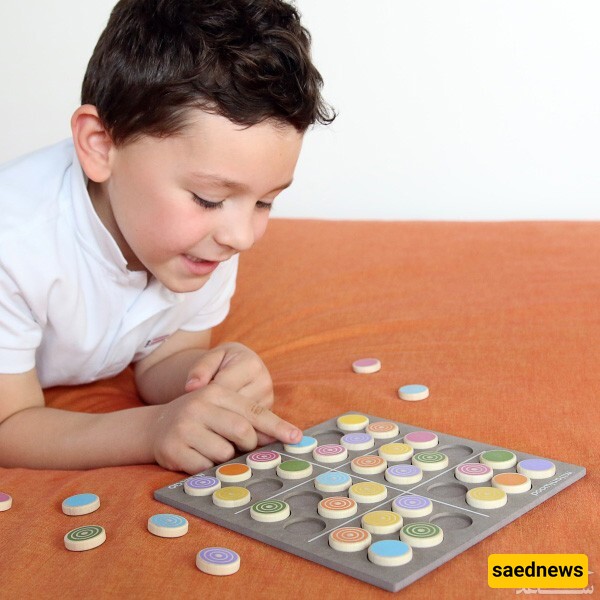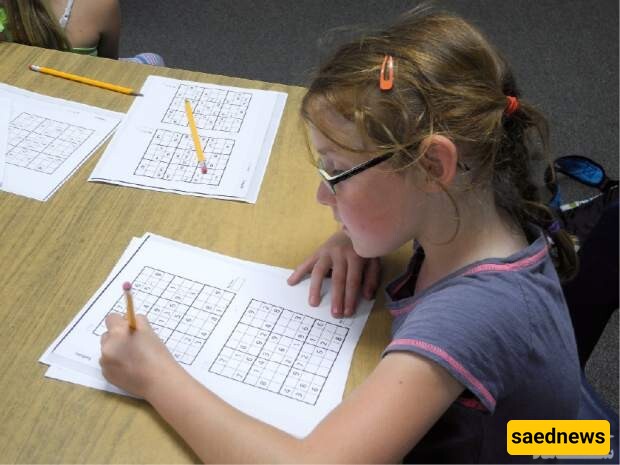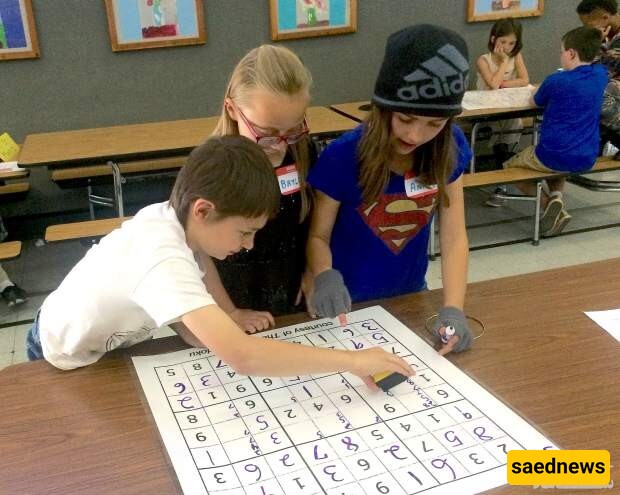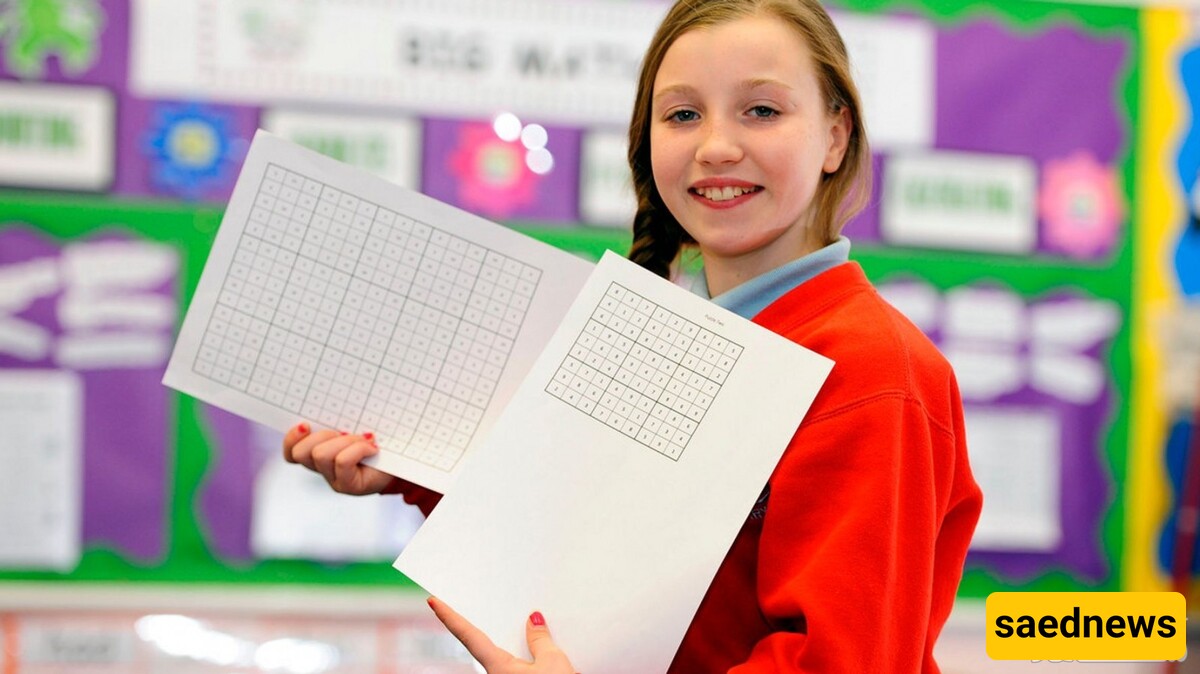The benefits of solving puzzles and their positive impact on mental performance and brain function are well known. In this article, we explain the amazing benefits of solving Sudoku puzzles for children.

Sudoku is one of the games that both children and adults can use to enhance their cognitive abilities, engage their brains, and develop their thinking skills. The word "Sudoku" is derived from Japanese words meaning "numbers must be alone."
If you have ever solved Sudoku puzzles, you know that these puzzles follow specific rules. One of the main rules is that the same number must not appear more than once in a row or within a square. These puzzles range from easy to complex, and individuals choose a level based on their abilities. The experience of solving Sudoku puzzles for children, who may not enjoy sitting still and concentrating for long periods, differs from that of adults, as children tend to be more active and play-oriented.

The first step in teaching Sudoku to children is ensuring they are familiar with numbers 1 to 9. You can introduce the game by drawing a Sudoku grid on paper and explaining the rules. Allow the child to experiment with different approaches until they understand the correct way to solve it.
Teaching Sudoku to children requires patience, time, and effort. It can be challenging to keep children engaged for long periods. However, if Sudoku is presented as a game, it becomes enjoyable and engaging. For instance, instead of using numbers, you can use different shapes, or start with a smaller grid to make learning easier.
Children love playing games, and they learn game rules more easily than academic lessons. You can incorporate play elements into Sudoku to make it more appealing.
To play Sudoku, you need a few materials. The game does not necessarily require numbers—you can use different geometric shapes or even the same shape in different colors. For example, use circles of various colors, where each color represents a specific symbol.

The traditional Sudoku grid consists of 81 squares, but for children, you don’t need to use a full 81-square grid. If you have access to an outdoor area, you can draw a large Sudoku grid on the ground using chalk. Divide it into four large squares, each containing four smaller squares. Then, use different shapes or symbols to fill the grid according to the game’s rules.
Another simple way to play is by drawing a grid on a whiteboard with a marker and filling it with magnetic symbols or colored markers. Alternatively, you can use colored tape to create a large Sudoku grid on the floor and fill it with three different geometric shapes in three different colors, ensuring each row contains each shape exactly once.
While playing, children must follow the main rules of Sudoku. Even though these versions differ from the traditional Sudoku for adults, they provide the same cognitive benefits. Introducing this game at home can significantly contribute to your child’s mental development.
Each grid should have at least 9 squares. You can gradually increase the grid’s complexity as the child progresses.
No row (vertically or horizontally) should contain duplicate numbers, shapes, colors, or symbols.
Sudoku teaches children logical thinking. The game helps them develop both inductive and deductive reasoning skills, even at a young age.
It enhances attention to detail. By following the rules, children learn to recognize patterns and make strategic moves to win the game.
This game requires minimal materials and mainly relies on creativity.
Sudoku provides more mental benefits than watching TV or playing video games, stimulating brain development.
By setting structured rules, Sudoku helps children learn discipline, patience, and concentration.
Children learn through trial and error, gradually discovering the correct methods to solve the puzzle.
Sudoku has numerous benefits, and its impact on children is even greater than on adults. By dedicating time to playing Sudoku with your child, you can help them reap these advantages. Here are some key benefits:
There is no single "correct" way to solve a Sudoku puzzle. Children develop different problem-solving approaches that may not align with conventional thinking.
By engaging in mathematical discussions and solving puzzles in groups, children can explain their reasoning behind their moves. Each child thinks differently, much like assembling a puzzle where multiple solutions exist. Logical discussions encourage valuable insights into different problem-solving methods.

Children must solve puzzles by logically analyzing their moves. They constantly ask themselves:
Will this method work?
Is this placement correct?
Why or why not?
If I place this piece here, how will it affect the others?
These questions strengthen children's logical thinking skills. They also learn to focus on details since placing an incorrect piece early in the game can disrupt the entire solution.
Children who develop attention to detail can recognize patterns and seize opportunities at the right moment to make strategic moves. Teaching attention to detail through Sudoku benefits them in many aspects of life, helping them advance in various fields.
Sudoku encourages children to become careful, systematic thinkers. The more structured their thought process, the more competent they become in their future careers.
Sudoku is a logic-based game that requires critical thinking and quick decision-making. Children enjoy playing Sudoku because it gives them a sense of independence and control.
As they play, they learn to establish a connection between their actions and the results. If they analyze the problem correctly and apply logical reasoning, they will reach the correct solution.
Sudoku teaches children patience by requiring them to think carefully and make cautious decisions.
Another form of patience involves maintaining focus while solving a problem. Children learn to concentrate, analyze problems from different angles, and develop persistence in facing challenges. This prepares them for similar problem-solving situations in school and life.
Research shows that Sudoku strengthens children's memory, particularly between ages 7 and 11. It serves as an excellent educational tool for improving abstract reasoning and memory retention.
Sudoku is also beneficial for learning mathematics and science. For example, in chemistry lessons, formulas can replace numbers in the Sudoku grid. It can also be used to teach spelling, vocabulary, and various other subjects.
Sudoku is much more than just a game—it is a powerful educational tool that enhances children's cognitive abilities. By integrating Sudoku into your child's routine, you can help them develop logical reasoning, attention to detail, patience, focus, and problem-solving skills. It’s an engaging and beneficial activity that positively impacts brain development and prepares children for future academic and life challenges.

